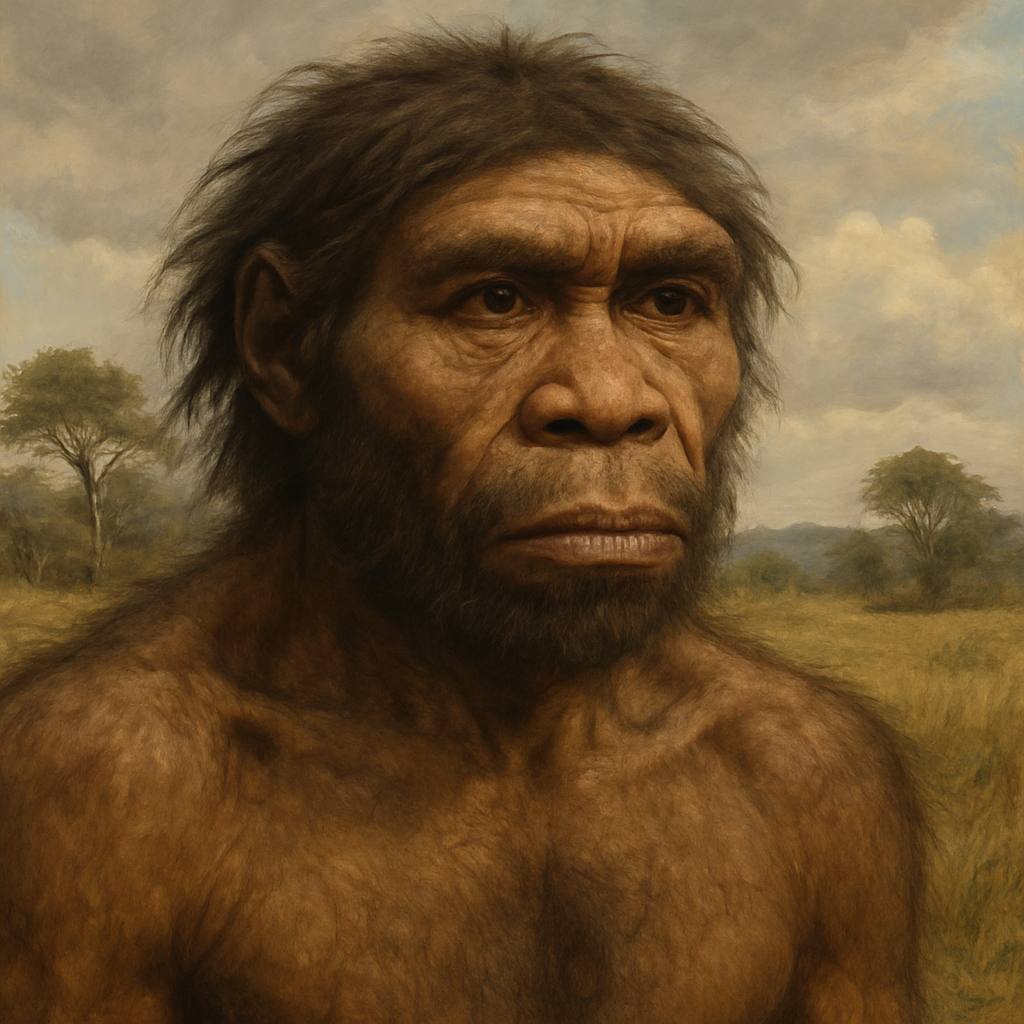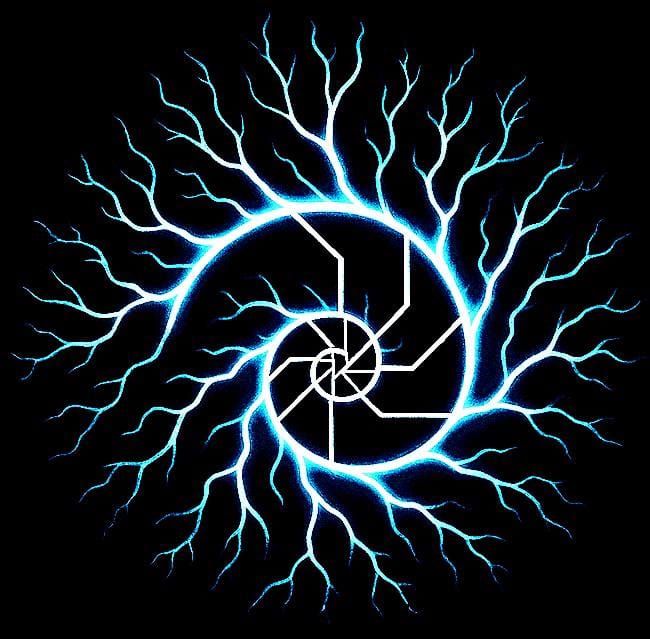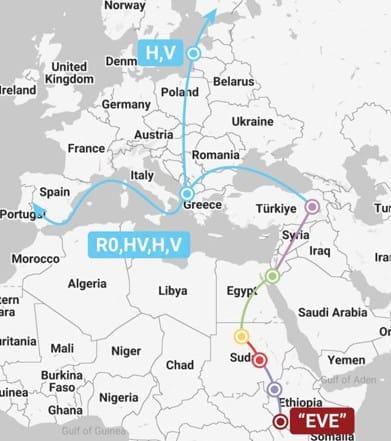Homo erectus: Life and Legacy

Why this, why now. I write about Homo erectus because the stories we inherit shape the nervous systems we train. If we keep telling a colonial, ladder-of-progress tale–primitive to advanced–we train contempt and forget the long practices that actually kept us alive: endurance, shared making, fire-time, route sense. I want a truer ancestor to stand behind our choices today. Not a cartoon caveman. Not a heroic pioneer. A field of beings who stabilized loops we still run.
This article peels back the myths to show Homo erectus as they truly were: a resilient, adaptable ancestor rather than a cartoonish "caveman" or a heroic pioneer. They stood upright with long legs but a stocky, powerful build – not the sleek marathon runners once imagined. They hunted, foraged and made tools in tough savannah and wooded landscapes, often living near water sources for survival. Over a million years they carried a cultural memory of Archeulean handaxe making across Africa, Europe and Asia. Their spread out of Africa was slow and piecemeal, guided by ecology rather than a single grand migration. Their lives were hard: survival meant endurance hunts, adapting to injury or loss, and sometimes enduring trauma. Yet traits they honed using landmarks to navigate, managing fire's logic, crafting with rhythm and symmetry - echo into us today. Importantly, we reject the outdated "one-way march of progress" narrative. Human evolution was complex and cyclical, not a straight line. And when we remove the colonial-era framing of H.erectus as a primitive stepping-stone, we see a fuller picture: diverse populations coping with real challenges, not glorified wanderers or failed ancients.
The body in its world
Picture a narrow river under a hard sky. On the bank: long legs, short arms, a deep chest. Heat lifts from stone. Bodies move not like sprinters but like metronomes. H. erectus carries a torso built for distance, lungs opening into a barrel that sheds heat in wind and shade. Brains larger than earlier kin, guts smaller, teeth trimmed down for higher‑energy food. This was a body tuned for open ground—water to water, grove to grove—where endurance mattered more than elegance and survival meant stringing together enough cool hours to push across a hot day.
They lived at the seams: lakeshores, wetland edges, savannah‑woodland ecotones. Risk never left—big cats, drought, missteps that cracked bone. Life was short on average; infant loss was common. And yet they persisted, again and again, by doing something most apes don’t do well: holding a rhythm over time.
A school you can carry in stone
Museums label it “Acheulean,” but that word hides the alive part. For more than a million years, hands repeated a lesson you can still feel. Pick up a suitable cobble. Strike a controlled flake. Mirror the other side. Thin, turn, thin again. Leave a thick heel at the base to hold torque. Stop when the edge sings and the weight feels right.
A handaxe is less a tool than a course of study. It teaches bilateral symmetry, material sense, patience. It spreads without writing. You can carry it while walking, teach it by showing, and learn it by repeating the gesture until the form appears. Across Africa, West Asia, and into Eurasia, that same lesson shows up in flake scars—a slow conversation between bodies and stone that neither froze into stasis nor exploded into novelty, but crept along in refinements.

Movement as tide, not exodus
We like heroic arrows on maps. Erectus moved more like a tide. In a warm phase, corridors open: Levantine windows, river trunks, coastal shelves. Groups pulse outward. In a cold squeeze, steppe hardens, deserts breathe, and some bands retreat or die out. The trail they leave is a necklace of places: Dmanisi beyond Africa in the early record; later, European occupations like Notarchirico; farther east, the Java sequence from Trinil and Sangiran to the late persistence at Ngandong. The sameness of the packet—the handaxe lesson—lets you track the practice even as faces and climates change.
Sometimes the body itself writes the clue. At Happisburgh, in England’s old mud, footprints record a pause in an interglacial window—evidence that the tide reached that far north long before painted caves.
Fire and the fragile order
Fire begins as custody more than mastery. Someone keeps embers alive during the move. Someone feeds damp twigs, shielded from wind in the crook of a body. Cooked meat and roots change teeth and time. Night rearranges into watch and whisper. Wonderwerk Cave is one anchor for early control. Much later, hearths punctuate camps with a new metronome: attention synchronized around flames, instruction accelerated by light and pause. Fire trains the day and the nervous system. It becomes the first durable social technology we can feel.
Proto‑symbolic threads (without overclaiming)
Meaning does not wait for bison on a wall. It appears in symmetry chosen again and again. In site re‑use where memory pools. In pigment traces that stain fingertips. In stones carried miles because the right fracture matters. Name these for what they are: local, tentative, plural. A thin braid of symbolics before “art,” not a void.
Echoes in our operating system
If you’ve ever fallen into a craft and felt your breath settle with your hands, you’ve met this ancestor. If a campfire calms you faster than a screen, you’ve met this ancestor. If a long, dull walk flips into an easy, endless stride, you’ve met this ancestor. The packet left residues.
- Craft entrainment became pottery’s coils, warp and weft, hammer and anvil.
- Fire ecologies became cooking, circadian retuning, the politics of night.
- Route memory became caravan logic, riverine trade, coastal hopping.
- A band‑scale nervous system meets empire‑scale bureaucracy and misfires; regulation fails because the scale is wrong.
- Scarcity vigilance mutates into modern anxiety loops.
To decolonize this story is to stop measuring them against us and start tracing processes we still run. It removes the ladder and shows the web.
Counterpoint and uncertainty (hold the plural histories)
Dates clump in bands (~1.8 Ma, ~1.4 Ma, ~0.7 Ma), and methods disagree. Southeast Asia’s late survival window is debated; present mainstream ranges alongside Ngandong’s late estimates. Proto‑symbolic claims are thin; call them behavior patterns, not categorical art. This humility is not a weakness; it’s how the picture stays honest.
What this changes now
We inherit more than genes. We inherit loops. If your myth is a ladder, you will design systems that burn hot, climb fast, and break. If your ancestor is a packet—a million‑year course in endurance, shared making, fire‑time, and route sense—you design for persistence and repair. That is the inflection inside this article: less heroism, more continuity; less contempt, more practice.



Comments ()